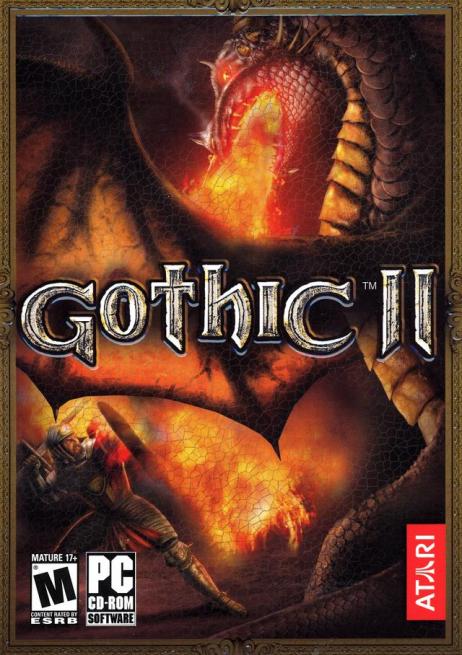Gothic II Review
-
Category: ReviewsHits: 7188

Article Index
Page 1 of 2
In the computer gaming industry there are many games that go largely unnoticed - the games that do not generate the hype and anticipation to rival summer blockbuster movies. In many ways, such games are highly underrated and do not generate the publicity of the major titles, but serve an important role in the gaming industry. Gothic II is such a game. It is not a game that will dazzle you with the latest graphics or exhaust you with two hundred hours of play time. It is a game which will provide its player with a solid RPG experience with a developing story that has spanned two full titles.Yes, the "II" at the end of Gothic invariably means there was a first Gothic. Gothic II is, as you would presume, a direct sequel to the events at the end of the first title. The main character was a nameless convict thrown into a prison colony, which is essentially a piece of land surrounded by a magical barrier. Fortunately for the convicts behind this barrier, they occupied the only section of land that contained a certain ore necessary for the making of weapons and armor to combat Orcs. Therefore, in order to obtain the ore, the King was forced to barter with the convicts. In the game, the main character had the choice of joining several camps within the prison colony, but regardless of which camp he joined, he would eventually destroy the barrier. Gothic II starts soon after this where you are the same unnamed hero who has since lost most of his skills from the first game. Necromancer Xardas from the first Gothic brings you up to speed on the recent events and sends you towards the nearby town of Khorinis, where you'll have to join one of three factions.
These factions are the Paladins, the Dragon Hunters, and the Fire Mages. The factions are as close as you get to a player class in Gothic II. Each faction is suited for a certain way to play the game, but you're allowed to deviate slightly. such as having a mage who happens to be rather handy with a two-handed sword. Choosing to join the Paladins will give you a mix of fighting, healing runes, and some of the best armor in the game. Join the Dragon Hunters and you'll show the world that magic runes are no match against a sword. Finally, the Fire Mages are like many other magic-using classes in other games. In the beginning they're fairly weak, but their spells later on are very destructive. In Gothic II, each guild starts you at the bottom of their (hierarchy), so to speak. Before you can become a Paladin, you must join the town militia. To be a Dragon Hunter, you must first be a mercenary. Finally, to become a Fire Mage, you must first join their monastery as a novice. Some people may not enjoy the limitation of having to join just one guild, but this factor greatly enhances the game's replayability. Because this is a sequel, there is no ability to change your character's basic appearance, which is usually considered a vital aspect to an RPG and may discourage some players. Players will have much to do in Gothic II as there are many side quests and sometimes more than one way to complete them. New side quests will continue to appear as the game progresses.
Gothic II's story progresses by chapters, but it essentially boils down to using the worn idea of orcs versus humans. The spin on this story is that dragons have come to lead the armies of the orcs and eventually the main character will have to go toe-to-toe with these beasts. Although the main storyline may seem to lack inspiration on the surface, there is surprising depth to the game. A vast majority of the NPC dialogue is voice acted and performed reasonably well. In fact, you even get to hear the main character say each dialogue option you've chosen. Players of the original Gothic will recognize many of the characters from the original game. Rivalries between the factions, and how others will react to you depending on which faction you choose are all nice touches as well. Only later in the game when you must hack through orc after orc do you feel like you have played this before.
The sequel is once again presented from a third person view and combat largely depends on striking and blocking at the right moments. Experience is gained from defeating monsters and completing quests, which in turn will allow you to gain learning points each time you level which can be distributed to various skills. Investing in combat skills, such as one handed, gives a much better result than simply doing more damage. Your character will actually hold his weapon and attack differently (and faster!). It is also possible to do small (combos) with such skills.


